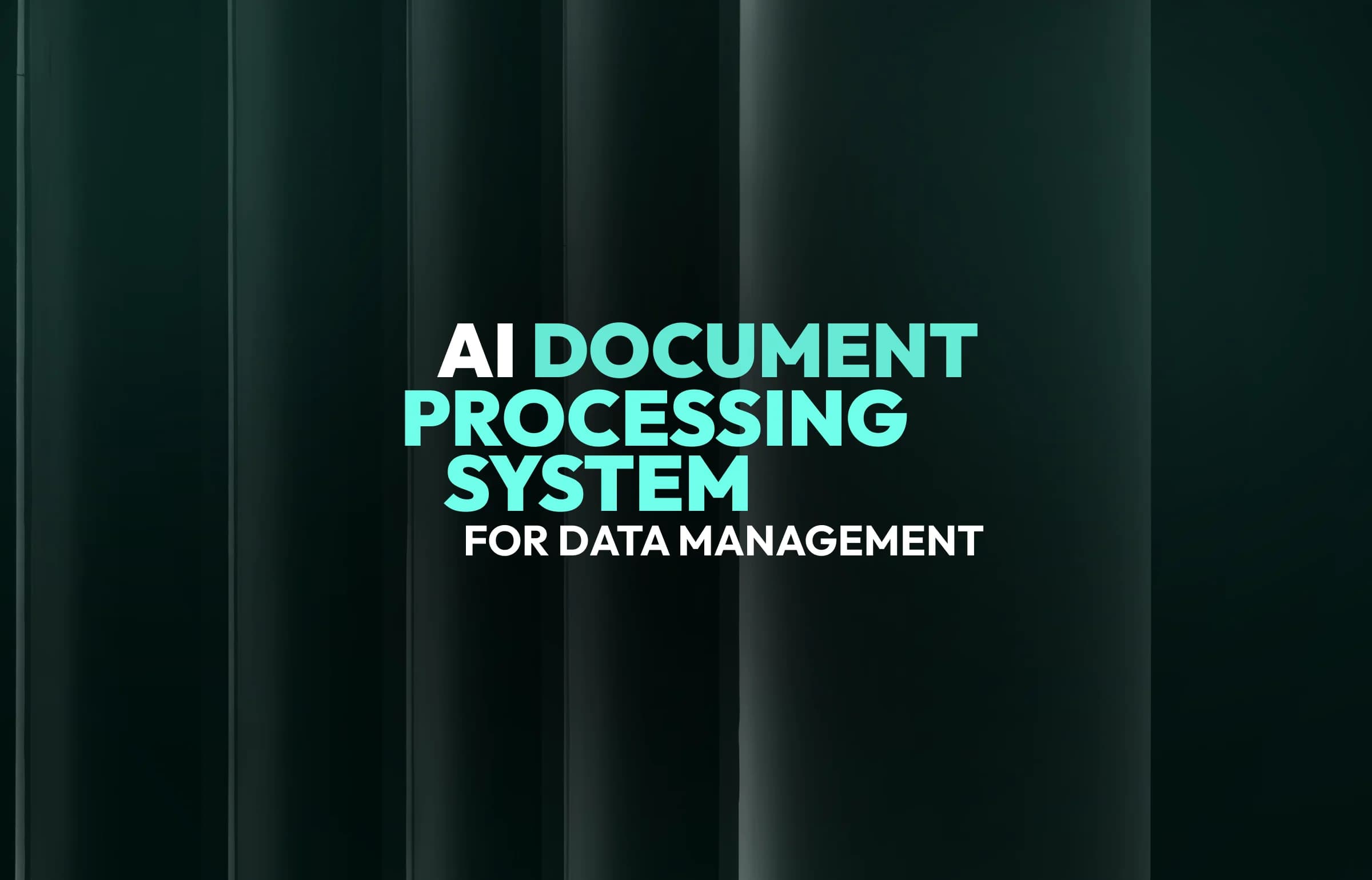
All How to Build Natural Language Processing + Examples
Updated:April 28, 202510 min read
Ever wondered how your phone knows what you mean by saying, “Where’s the nearest coffee shop?” Or how spam emails vanish from your inbox? That’s Natural Language Processing (NLP) in action.
Intro
NLP is how machines learn to “get” human language – words, phrases, and even context. It’s what powers tools like chatbots that really help. It’s also behind translation apps, voice commands, and even tools that analyze customer reviews to find hidden insights.
The demand for NLP is huge. We’ll take a look at the overview of the NLP market further in the article, but just imagine – it is projected to grow at an impressive annual rate of 40.4% between 2023 and 2030 according to Grand View Research.
That’s because companies everywhere need smarter tools to understand and respond to customers.
In this guide, we’ll cover:
- What NLP is and how it works;
- Techniques and tools to build it;
- Real-world examples that make it click.
Read on for more!
What is Natural Language Processing (NLP) and How Does it Work?
NLP is a branch of machine learning focused on recognizing, generating, and processing spoken & written human language. It sits at the crossroads of artificial intelligence and linguistics. Think of it like teaching a robot to talk and listen like a real person.

Software engineers create systems that enable computers and humans to communicate through natural language. With NLP, computers can read, interpret, and understand human language, and even generate responses. The machine's ability to process language depends on its level of intelligence in decoding human messages into meaningful information.
How does NLP work:
- An audio device captures human speech.
- The machine converts the audio into written text.
- The NLP system breaks down the text, understands the context of the conversation, and identifies the person’s goals.
- Based on this understanding, the machine decides what action to take.

SapientPro’s team provides NLP development services, helping your business leverage all the benefits this technology has to offer.
NLP Market Overview and Industry Demand
The NLP market is growing fast. And it’s not hard to see why. Businesses are realizing how much NLP can improve customer interactions and make operations smoother. In fact, the global NLP market is set to hit $68.1 billion by 2028.

As businesses increasingly embrace NLP, they’re seeing tangible improvements. Here’s a closer look at some key statistics and why they matter:
- 28% higher customer satisfaction and 18% fewer errors.
Why it matters: when companies use NLP, customers get better service. Fewer mistakes mean smoother operations, and happy customers are more likely to stick around.
- 22% faster responses and 35% more conversions.
Why it matters: speed matters. NLP helps businesses reply faster, making customers feel valued. Faster responses = higher chances of turning visitors into buyers. It’s a win-win.
- 43% of companies use NLP for compliance and data security.
Why it matters: with sensitive data everywhere, protecting it is key. NLP automates tasks like scanning documents for confidential info, making sure businesses stay compliant and secure.
- 78% of businesses plan to invest more in NLP by 2025.
Why it matters: businesses are seeing the benefits and want more. More investment means better tools and faster growth. NLP is shaping up to be a must-have for the future.
Core NLP Techniques Explained with Examples
NLP employs a range of techniques to effectively understand and process human language. Let’s take a look at the NLP processing steps:
- Tokenization or word segmentation.
- This technique breaks text into smaller units called “tokens” – words, subwords, or characters. For example, tokenizing “I love ice cream” results in: I – love – ice – cream. Tokenization is the first step in most NLP tasks.
- Stemming & lemmatization. Both reduce words to their base forms, but differently:
- Stemming chops off word endings (e.g., happiness → happi), but the result isn’t always a valid word.
- Lemmatization uses context to reduce words to their dictionary form (e.g., happiness → happy, better → good), ensuring real words. It is more accurate but more complex.
- Morphological segmentation.
- This breaks words into morphemes, the smallest meaningful units. For example, “notebook” becomes “note” and “book”.
- Stop words removal.
- Removes common, unimportant words (e.g., “the,” “and”, “of”) to focus on more meaningful content.
- Text classification. Involves sorting text into categories like:
- Sentiment analysis – determining if a text is positive, negative, or neutral (e.g. analyzing customer reviews to see if they express satisfaction or dissatisfaction);
- Topic modeling – identifying the main themes in a text (e.g. grouping news articles by categories like politics, sports, or entertainment);
- Keyword extraction – finding the most relevant words or phrases in a text (e.g. extracting key terms like “machine learning” or “data analysis” from a research paper).
- Text summarization.
- Condenses long text into a shorter version, keeping the key points. For example, summarizing a news article into a few sentences.
- Parsing.
- Analyzes sentence structure to understand the relationships between words. In “The dog chased the ball,” parsing identifies “dog” as the subject, “chased” as the verb, and “ball” as the object.
- Named Entity Recognition (NER).
- Identifies specific entities like people, places, and organizations. In “Apple Inc. announced a new iPhone in San Francisco,” NER tags “Apple Inc.” as an organization and “San Francisco” as a location.
- TF-IDF (Term Frequency-Inverse Document Frequency).
- Measures the importance of a word in a document based on its frequency in that document and across a collection. Words that appear often in one document but rarely in others have a high TF-IDF score. For example, “football” would have a high TF-IDF in a sports article but low in a general news article.
Although there may be other techniques used with NLP, these are the key options that are used in the majority of projects.
What Is the Difference Between NLP and Large Language Models (LLMs)?
With AI advancements constantly evolving, it’s easy to mix up NLP and LLMs (Large Language Models). Both work with language, but they cannot be used interchangeably. A key distinction between NLP and LLMs lies in their understanding of language.
NLP systems are designed to comprehend human language more deeply, whereas LLMs function as advanced prediction tools that generate text without truly understanding it.
NLP | LLMs |
|---|---|
| Understands and processes human language | Generate text based on patterns in data |
| Focuses on actual comprehension of language | Rely on statistical predictions, without true comprehension |
| Performs tasks like text classification, parsing, and sentiment analysis | Generate human-like text based on context but lacks deeper understanding |
| Typically task-specific, requiring structured input | Requires massive datasets and computational resources |
NLP Use Cases by Industry
As mentioned before, NLP is used across a variety of business domains. Let’s see how each industry can benefit from NLP.
In Healthcare, NLP is used for medical transcription, turning speech into text, and automating clinical documentation. It helps predict diagnoses by analyzing patient data.
Telecommunications relies on NLP for call center analysis, helping gauge customer satisfaction. NLP also supports speech-to-text transcription and automates customer support.
For the Media & Entertainment industry, NLP performs content moderation on social media and news aggregation. It also analyzes sentiment from audience feedback to gauge reactions to content.
The Travel & Hospitality sector benefits from NLP in customer service, where NLP models for chatbots assist travelers. NLP also supports sentiment analysis for customer reviews and helps create intelligent booking systems.
In the legal industry, NLP aids in document analysis to extract key information and automate contract reviews. It is also used to ensure compliance through monitoring legal documents. And that’s not even the full list.
Programming Languages, Libraries, and Frameworks for Natural Language Processing (NLP)
Choosing the right programming languages, libraries, and frameworks is essential for building effective models and applications. Here’s an overview of the most popular tools used in the NLP field.

Programming Languages for NLP
- Python – easy to use, has a vast number of libraries, and supports ML frameworks. It’s the go-to language for most NLP tasks;
- R – used for statistical computing and is preferred in academia and research settings for tasks like text analysis and sentiment analysis;
- Java – often used for large-scale, production-level NLP applications due to its speed and scalability.
- JavaScript – growing in popularity for web-based NLP applications, especially with the rise of browser-based models and tools;
- C++ – Used for high-performance NLP tasks, especially in real-time or resource-heavy environments.
Libraries for NLP
- NLTK (Natural Language Toolkit) – one of the oldest and most comprehensive Python libraries for NLP. It provides tools for classification, tokenization, stemming, and parsing;
- spaCy – powerful and fast, excels in tasks like part-of-speech tagging, named entity recognition, and dependency parsing;
- TextBlob – a simpler library for basic NLP tasks such as sentiment analysis, translation, and part-of-speech tagging;
- Gensim – specializes in topic modeling, document similarity, and word vectorization (Word2Vec).
Frameworks for NLP
- TensorFlow – a deep learning framework that supports NLP models, particularly those involving neural networks for text classification, translation, and generation;
- PyTorch – another DL framework that has gained popularity for NLP, especially for research in machine translation and text generation;
- Keras – a high-level neural networks API that runs on top of TensorFlow, making it easier to build deep learning models for NLP tasks.
Want to see NLP in action?
Check out our case study, where we built a Decentralized Domain Naming System.
What Are the Approaches to Natural Language Processing?
Natural language is incredibly complex, with countless rules, exceptions, and nuances that vary across contexts and languages. To tackle this challenge, there are various approaches to NLP.
The first approach is rule-based NLP. It relies on predefined linguistic rules (written by linguists and developers) to process and analyze language. For example, a rule might identify all verbs in a sentence by their endings or positions. It’s precise but struggles with handling ambiguity or complexity in real-world language.
The next one is neural network-based NLP. This method uses artificial neural networks to learn patterns in language data. Unlike rule-based systems, neural networks don’t rely on human-created rules. Instead, they’re trained on large datasets to understand and predict language structures. This approach powers advanced models like GPT.
One more approach is machine learning-based NLP, which is a step between rule-based and neural networks. It involves training algorithms on labeled data to recognize patterns and make predictions. It’s often used for tasks like spam detection or sentiment analysis, where the system learns from examples rather than explicit rules.
Most Popular Natural Language Processing Models
The field of NLP has seen incredible advancements, thanks to sophisticated models that push the boundaries of what machines can do with language. Let’s take a look at some of the most well-known and widely used NLP model examples.
- GPT.
Known for: generating human-like text.
Use cases: chatbots, content generation, summarization, and more.
- BERT (Bidirectional Encoder Representations from Transformers).
Known for: understanding the context of words from both directions in a sentence.
Use cases: search engine optimization, question-answering, and language inference.
- T5 (Text-to-Text Transfer Transformer).
Known for: treating all NLP tasks as text-to-text problems.
Use cases: translation, summarization, and sentence completion.
- RoBERTa (Robustly Optimized BERT Approach).
Known for: enhanced performance over BERT with better training techniques.
Use cases: sentiment analysis, classification, and text similarity tasks.
- XLNet.
Known for: combining advantages of autoregressive models and bidirectional context understanding.
Use cases: text completion, classification, and language modeling.
Most Popular Natural Language Processing Tools
Modern developers and researchers rely on the following tools to easily implement language-based tasks:
- IBM Watson.
Great for: enterprise-level NLP and AI applications.
Features: identifying keywords, categories, emotions.
- TextBlob.
Great for: simplicity and beginners.
Features: part-of-speech tagging, sentiment analysis, language translation.
- MonkeyLearn.
Great for: no-code text analysis and business use cases.
Features: keyword extraction, topic classification, sentiment analysis.
- Stanford CoreNLP.
Great for: academic and linguistically accurate NLP tasks.
Features: part-of-speech tagging, named entity recognition, tokenization.
- Google Cloud Natural Language API.
Great for: Cloud-based NLP applications.
Features: Content classification, entity extraction, and sentiment analysis.
Step-by-Step Guide: NLP Model Development
If you decide to build NLP model from scratch, follow these NLP model steps.
Step 1. Clearly identify the problem you want the NLP model to solve. This could range from text classification to sentiment analysis or translation.
Step 2. Gather a large dataset relevant to your task. Preprocess the text by removing noise, stop words, or irrelevant information.
Step 3. Tokenize the text, meaning break down sentences into smaller units like words or subwords to simplify text processing.
Step 4. Choose the approach from those listed in the article depending on your problem’s complexity.
Step 5. Convert text into numerical representations using techniques like TF-IDF, word embeddings, or Bag of Words. These features help the model understand the text.
Step 6. Select and train a suitable algorithm. Use labeled data for supervised learning, or explore patterns in unlabeled data for unsupervised tasks.
Step 7. Train the model on the training data and validate its accuracy using the test data.
Step 8. Measure performance using metrics like accuracy, precision, recall, or F1 score.
Step 9. Adjust hyperparameters, retrain with more data, or tweak features to improve performance.
Step 10. Integrate the model into a production environment. Monitor its performance in real-world scenarios and update as needed.
These are the must-do steps to build NLP pipeline.
How Much Does it Cost to Build and Maintain an NLP Solution?
The costs of development for an NLP model can vary greatly depending on a range of factors and typically are around $25,000 to $90,000. First of all, you should take into account the level of complexity. Solutions of basic level functionality will obviously cost less.
Industry-specific requirements, such as those in healthcare or finance, may also drive up expenses due to the need for specialized models and adherence to strict regulations. Additionally, the size of the dataset and the extent of custom training required can further influence the final price.
The tools, technologies, modules, and system integrations used can differ significantly across software solutions. As a result, the costs for design, development, integration, and ongoing maintenance will vary, impacting the overall price. To get an accurate estimate for developing an NLP solution, we recommend consulting with our NLP development company.
Future Trends in NLP
With the NLP market continuing to expand, we can expect fresh developments to drive its evolution in the coming years. Here’s what to anticipate:
- What if NLP systems could perform tasks and understand language with little to no training data? Well, that’s actually what we’re expecting. This could be a game-changer, especially for languages and tasks that lack sufficient annotated data.
- Imagine combining NLP with AR and VR. This could create more immersive, interactive environments where users communicate naturally with AI-driven agents in a 3D space.
- Future AI could feel more like a helpful assistant, adjusting on the fly to your needs. This is what to expect if NLP could learn from your feedback in real time.
- As data privacy concerns grow, future NLP research will likely shift towards methods that learn from data without risking privacy. Expect technologies like federated learning and differential privacy to play a bigger role in this effort.
- Today’s systems can handle basic conversations, but future ones will tackle more complex interactions. They’ll likely understand context, emotions, and even sarcasm. This will enhance virtual assistants, customer service, and therapy bots.
Summary
We’ve covered everything you might want to know about NLP. Next step? Contact us if you already have an idea in mind. If you're still exploring possibilities, we're still here to help you find the perfect solution for your needs through Natural Language Processing consulting.



